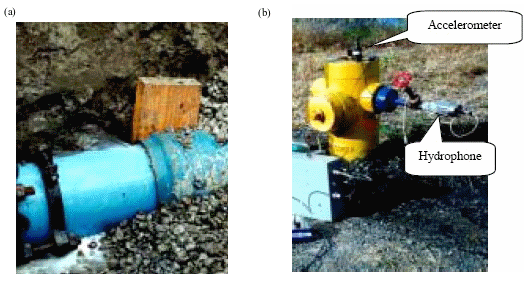Pipeline leakage has been a major concern of economic losses due to significant environmental damage. Acoustic techniques have proven to be effective and are widely used to locate leaks in water distribution pipes for many years. Whilst sensors such as hydrophones and accelerometers are commonly used to detect leaks in water distribution pipes, the mechanism governing the structural and fluid motions has not been well documented.
Researcher GAO Yan from the Institute of Acoustics of the Chinese Academy of Sciences and researcher LIU Yuyou from Beijing Municipal Institute of Labour Protection work together and have recently theoretically and experimentally investigated structural and fluid motions at low frequencies in water distribution pipes.
Their investigation has provided a basis for further improvement of leak detection technologies in urban environments, which is one major challenge currently facing pipeline networks across the world.
Researchers carry out numerical analysis on a cast iron water pipe and a PVC water pipe. Numerical examples show that for both pipes, the contributions of the shell-dominated (s = 2) wave to both the pipe wall motion and fluid motion are negligible.
It shows that the fluid-dominated (s = 1) wave is responsible for the propagation of leak noise in buried water distribution pipes, which can be effectively detected by acoustic/vibration sensors in practical leak detection. Since pressure signals are less affected by ambient noise, they are better suited to detect water leaks in a low signal-to-noise ratio environment.
Meanwhile, it has shown that the radial pipe wall motion can be evaluated by monitoring the internal pressure in response to the fluid-dominated (s = 1) wave (or vice versa).
Although both acoustic and vibration sensors at the same location provide the identical phase information of the transmitted signals, pressure responses have significantly higher levels than acceleration responses, and thus hydrophones are better suited in a low signal-to-noise ratio environment.
Two buried pipe systems have been presented to support the theoretical findings, including a leak detection facility located at a National Research Council (NRC) site in Canada (see Fig. 1) and a buried MDPE pipe facility at the UEA in the UK.
Different excitation mechanisms are adopted for comparison. For the NRC test, measurements are carried out when water leakage occurred. For the UEA test, pressure measurements involve direct excitation of the fluid and the pipe fitting (hydrant). Leak signals from the NRC site have clearly shown that pressure response has a much higher signal-to-noise ratio than acceleration response.
Moreover, the experimental work measurements at both sites demonstrates that the fluid-dominated (s = 1) wave is mainly responsible for the structural and fluid motions at low frequencies in water distribution pipes as a result of water leakage and direct pipe excitation.

Fig. 1 Test site at the NRC: (a) a joint leak; (b) sensor attachment (Image by GAO et al.)
Reference:
GAO Yan, LIU Yuyo. Theoretical and Experimental Investigation into Structural and Fluid Motions at Low Frequencies in Water Distribution Pipes. Mechanical Systems and Signal Processing (Volume 90, June 2017, Pages 126–140). DOI: 10.1016/j.ymssp.2016.12.018
Contact:
GAO Yan
Key Laboratory of Noise and Vibration Research, Institute of Acoustics, Chinese Academy of Sciences, 100190 Beijing, China
E-mail: gaoyan@mail.ioa.ac.cn


